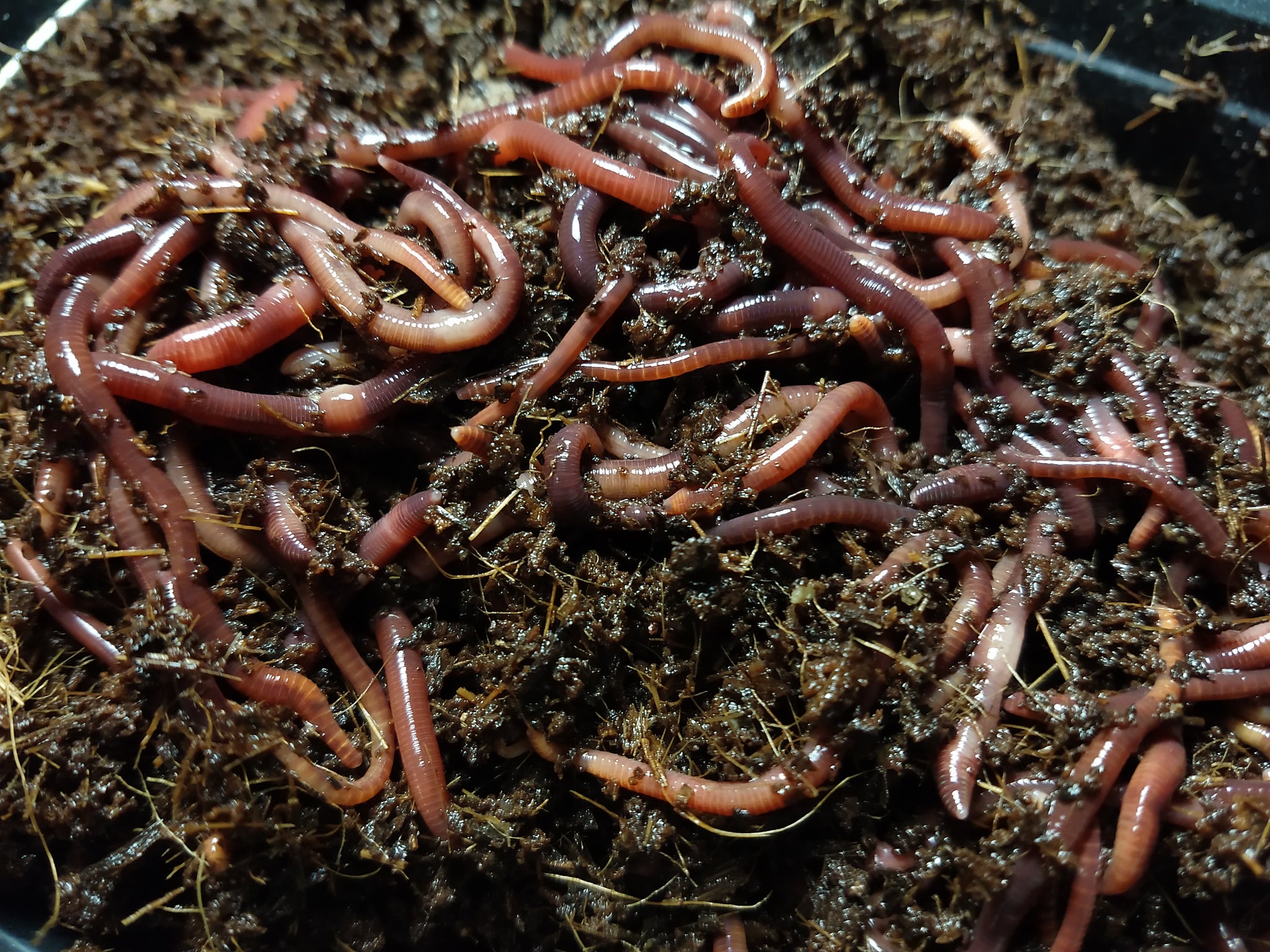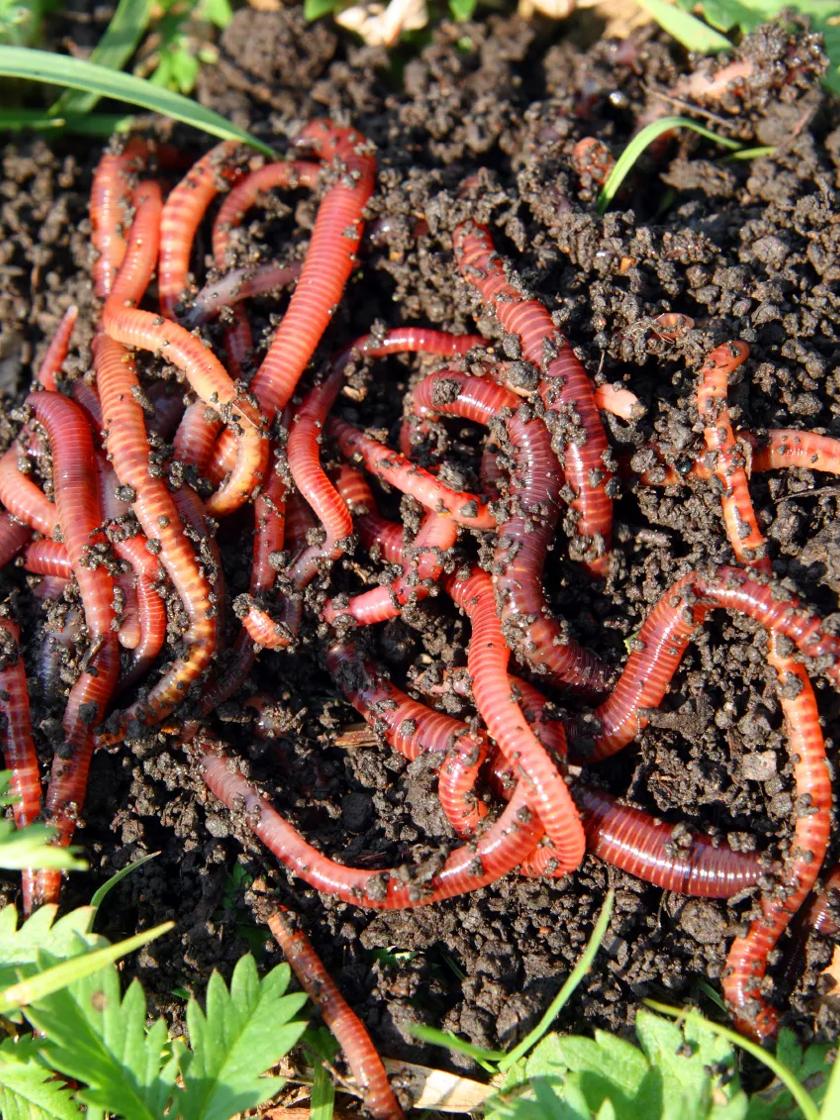Red Wigglers: The Unsung Heroes of Organic Waste Recycling
Red wigglers, or Eisenia fetida, function as crucial representatives in the natural waste recycling process, changing thrown out products right into beneficial vermicompost. Their efficient break down of organic matter not only enhances soil high quality however likewise adds to sustainable waste monitoring techniques. As the globe significantly seeks remedies to combat waste accumulation and improve agricultural performance, understanding the duty of these worms comes to be essential. What systems permit them to flourish in compost environments, and how can they be successfully made use of in both property and industrial settings? Exploring these questions reveals the broader effects of vermicomposting in our eco-friendly landscape.
What Are Red Wigglers?
The exceptional durability of red wigglers, clinically referred to as Eisenia fetida, underscores their essential role in organic waste recycling. These little, reddish-brown earthworms are typically found in decomposing organic issue, such as compost heap and manure stacks. Lake Hickory Bait. Unlike other earthworm types, red wigglers flourish in nutrient-rich settings and are very effective at damaging down organic materials, making them necessary for vermicomposting

(Red Wiggler Express)Along with their function in waste decrease, red wigglers add to soil health and wellness by enhancing dirt structure and aeration with their delving tasks (Lake Hickory Bait). Their presence in composting systems not only improves decomposition prices but likewise advertises a lasting technique to waste monitoring, illustrating their importance in ecological conservation initiatives
Advantages of Composting With Worms
Composting with worms, particularly red wigglers, uses countless benefits that boost both waste management and dirt health. First, these worms efficiently break down organic waste, transforming it right into nutrient-rich vermicompost that enhances soil. This process speeds up decay, enabling a quicker recycling of kitchen scraps and various other natural products contrasted to standard composting techniques.
In addition, the vermicompost produced by red wigglers is including advantageous microorganisms, which help improve dirt framework, oygenation, and wetness retention. This enhances the total wellness of plants, advertising vigorous growth and raised returns in yards and farming settings. Additionally, using worms in composting minimizes the production of greenhouse gases, such as methane, adding to a much more sustainable waste monitoring system.

How to Begin Vermicomposting
Developing a vermicomposting system is an uncomplicated process that can yield substantial benefits for both waste management and soil enrichment. To begin, choose an ideal container, such as a plastic container or wood box, with ample air flow openings to ensure appropriate air flow. The measurements must preferably be about 2 feet by 3 feet, allowing ample space for the worms to flourish.
Following, prepare bedding material, which can consist of shredded newspaper, cardboard, or coconut coir. This bed linen ought to be moistened to produce an appropriate environment for the worms. When the bed linen is in location, introduce red wigglers (Eisenia fetida) into the bin, generally around one pound of worms for every square foot of surface area.
Complying with the placement of worms, include natural waste, such as fruit and veggie scraps, coffee premises, and crushed eggshells. With these actions, you will successfully initiate a vermicomposting system that adds to lasting waste management and improves your soil.
Preserving a Healthy Worm Bin
(Red Wiggler Express)Keeping a worm bin thriving calls for routine focus and like make certain the wellness of the red wigglers and the effectiveness of the composting procedure. Proper upkeep begins with keeping track of the dampness levels; the bin needs to perspire but not saturated. A good regulation of thumb is to maintain a consistency similar to a wrung-out sponge.
Carefully mixing the bedding and food scraps every couple of weeks protects against compaction and guarantees that all worms have accessibility to oxygen. Additionally, it is vital to feed the worms suitably.
Temperature level regulation is an additional important element. Red wigglers prosper in a series of 55 to 77 degrees Fahrenheit. If the container becomes too hot or chilly, the worms may come to be stressed - Lake Hickory Bait. Last but not least, occasionally look for signs of health, such as worm populace development and the visibility of healthy and balanced spreadings. By faithfully taking care of these variables, one can keep a durable and productive worm bin.
Influence On Lasting Living
The effective maintenance of a worm bin not just profits the wellness of red wigglers yet likewise contributes considerably to sustainable living methods. By reusing organic waste, such as kitchen scraps and backyard particles, red wigglers help draw away significant quantities of material from land fills. This reduction in waste not only lowers greenhouse gas exhausts however also lessens the environmental burden related to waste administration.
Furthermore, the spreadings created by red wigglers work as a nutrient-rich organic fertilizer, enhancing dirt health and advertising plant growth. This all-natural option to chemical fertilizers sustains sustainable agriculture and horticulture methods, decreasing dependence on synthetic inputs that can hurt environments. Additionally, worm composting promotes awareness of my review here waste administration, encouraging individuals and areas to embrace even more sustainable routines.

Final Thought
In recap, red wigglers serve as vital contributors to organic waste reusing through their reliable disintegration of organic materials. By incorporating vermicomposting into waste monitoring approaches, people and neighborhoods can considerably reduce waste while advertising environmental sustainability.